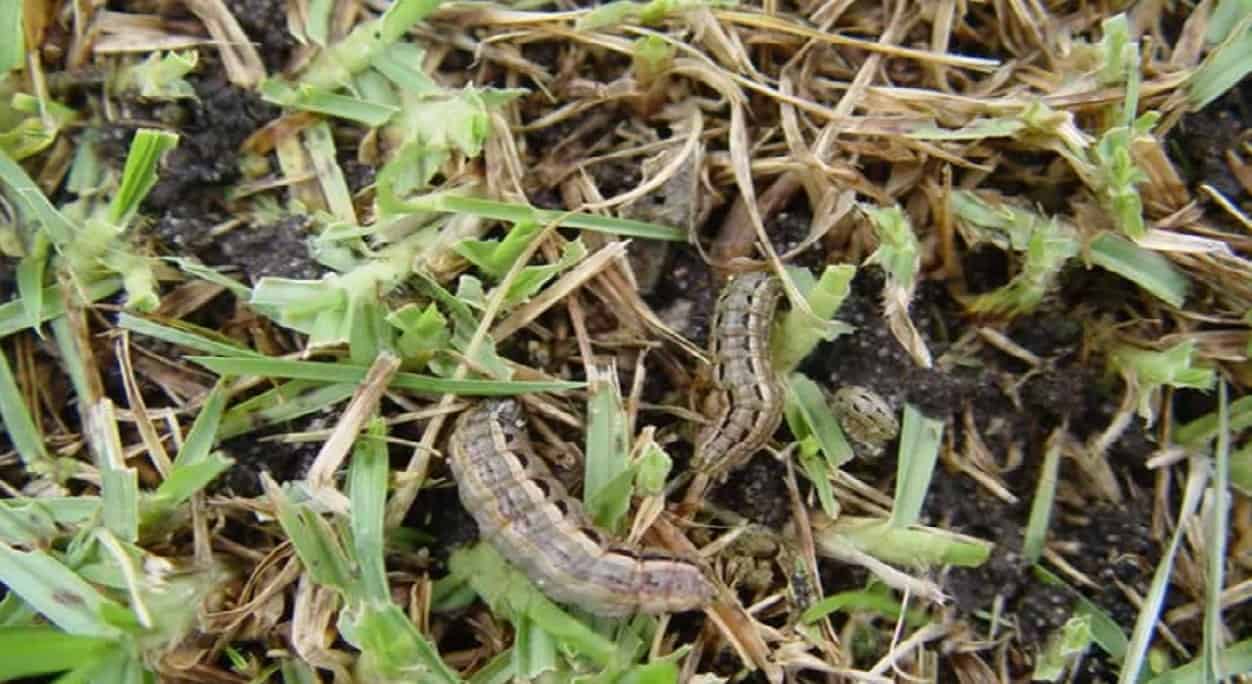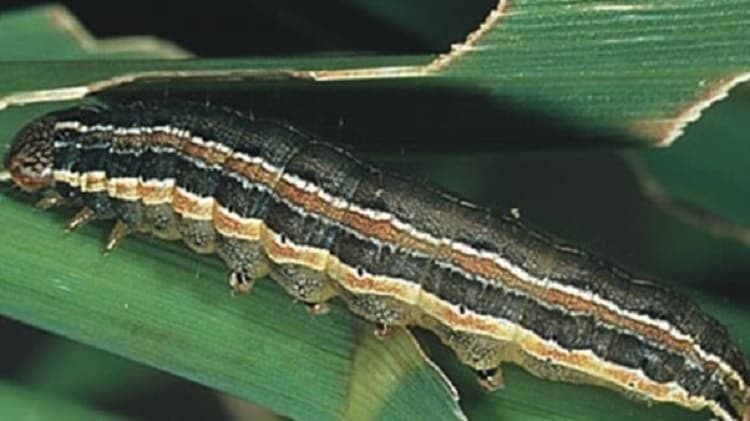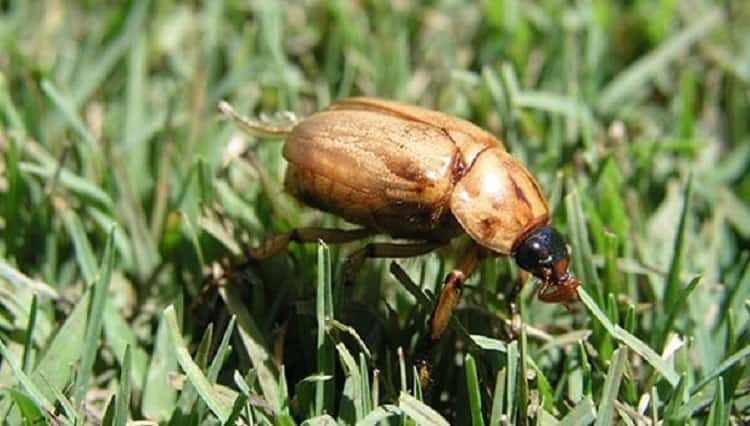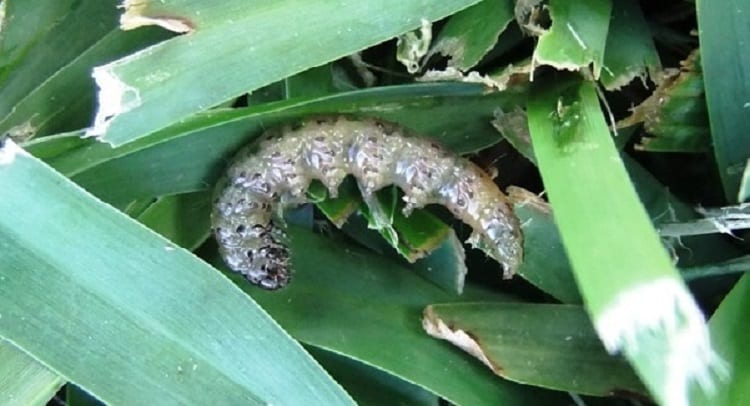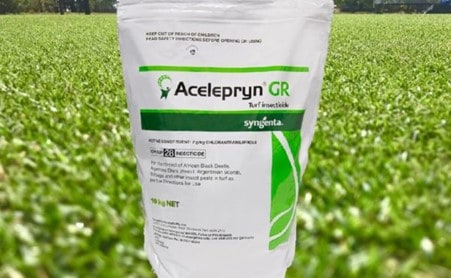LAWN GRUBS & HOW TO TREAT THEM
Do I Have Lawn Grubs? | What Do They Do To My Lawn? | What’s The Best Grub Killer?
Spring through to autumn is the time when legions of lawn grubs take over Australian lawns causing significant damage to those precious green grass areas.
There are a number of lawn grub species commonly found in Australian lawns.
Fortunately, there are some very effective and easy ways to kill lawn grubs.
Here you can learn how to identify which type of grub is affecting your lawn and how to get rid of lawn grubs.
Lawn grubs live in the soil in their larval stage and feed on the grass roots and stems.
It’s important to deal with any of the common lawn grubs quickly because their population numbers can rapidly explode and, thanks to their voracious appetites, they can quickly transform your precious lawn into a desert.
HOW CAN I TELL IF MY LAWN HAS LAWN GRUBS?
Early detection and treatment is vital if you want to maintain your lawn in good healthy condition.
Fortunately, there are a number of tell-tale signs that will let you know that you have a grass grubs infestation on your hands.
The presence of brown or greyish patches on the grass is one of the most obvious signs that grass grubs have invaded your lawn and eaten the root system.
Brown thin patches of lawn is often an indication of the white curl grub damage which are the larvae in most cases of the African Black Beetle and the Argentinian Scarab which is brown and similar in appearance to the African Black Beetle.
The ground might feel quite spongy to walk on as well as a result of the grubs’ burrowing and feeding activities.
Other signs to look for include:
- Increased bird activity on your lawn (feeding on the grubs) – the birds can add to the damage as they dig up the turf.
- Large numbers of small grey moths flying above the grass – looking for places to lay their eggs.
- Wasps in growing numbers on the lawn – some species of wasp use grass grubs as host for their own eggs.
- White cotton-like egg sacs on the outside of your house, on the fence or outdoor furniture, or on garden plants.
- Patches on the lawn like it has been mown very short. Usually this is damage from army worms or cutworms eating the leaves.
- You can often see bright green grub poo in the thatch of the grass where the army grubs are inhabiting your lawn.
Here are two other simple tests you can do to help confirm the presence of grass grubs.
Leave a wet sack or piece of carpet on the lawn overnight. If there are grubs present they will come to the surface.
You can check by lifting the sack early in the morning. This works especially well for Armyworms as they hide in the grass thatch at night time.
Or try wetting an area of the lawn with a mild soapy solution.
You can mix up a solution of water and dish washing detergent in a bucket and pour it over a suspect area of the lawn.
This too will bring certain types of grubs to the surface.
WHAT DO THEY DO TO MY LAWN?
The different grass grub species generally follow a similar lifecycle; a larval stage followed by a pupae stage and finally an adult beetle or moth which then lays eggs for the next generation.
The larval stage is the one that causes the damage to your lawn.
The larvae devour great quantities of roots, leaves, stems and even seed heads (according to the species’ specific tastes) to prepare for the pupae stage.
Grass grub infestations coincide with the onset of your lawn’s renewed growth after winter dormancy.
Grass grubs adore the highly nutritious tender new growth that usually shoots away when the warmer months arrive.
Serious grub infestations can wipe out the entire root system of large patches on your lawn with the result that the grass dies.
Sometimes you can actually pull up entire sections of lawn as if you were removing a wig.
Grubs such as the Armyworm focus on the leaves and can chew grass down to ground level.
The result is, at best, a very ragged looking lawn, or more likely, if left untreated, large dead patches of grass.
When the roots are even partially eaten away the grass is unable to absorb moisture.
So, the impact of any grass grub damage will be much greater during dry periods.
These caterpillars or larval grubs then develop into adult beetles or moths that fly away, laying their eggs on or around healthy grassed areas to start the cycle all over again.
Common Grass Grubs
African Black Beetle | Armyworm | Argentinian Scarab | Sod Webworm
There are several types of grass grub that are commonly found in Australian lawns.
AFRICAN BLACK BEETLE
The African Black Beetle (Heteronychus arator) also known as White Curl grubs or Cockchafer beetles are capable of causing significant damage to large areas of your lawn.
However, keeping your lawn healthy helps to limit the extent of damage these pests can do.
The name White Curl comes from the white C-shaped larvae that live in the soil and devour the grass roots and stems.
The adult Black beetles mate and the female lays up to 80 eggs beneath the soil surface.
The eggs hatch and the larvae, although tiny at first grow rapidly during the next 10 weeks to around 25mm long thanks to the nutritious food supply from the new grass growth.
It’s during this period (early November through to late January) that they cause the most damage.
They then move into the pupae stage before emerging as the distinctive adult Black beetle in late summer or early autumn.
ARMYWORM
There are actually a number of lawn grubs that are commonly known as Armyworms; Spodoptera frugiperda or Pseudaletia unipuncta, are two of the most destructive.
The appearance of small, dull grey / brown moths (3 cm wingspan) hovering over your lawn at dusk is probably the first sign of the impending approach of an armyworm infestation.
These moths lay hundreds of eggs that quickly hatch into rapidly growing ravenous caterpillars.
The caterpillars are usually light green to dark brown with a number of stripes running along the body.
The overwhelming numbers of these hungry caterpillars on the march across your lawn is one reason they can do so much damage to your lawn in a short space of time.
Armyworms chew along the edge of the leaves and will often chew the grass down to ground level leaving little but bare patches of soil.
On reaching maturity the worms form pupae from which the adult moths quickly emerge to repeat the cycle.
ARGENTINIAN SCARAB
The Argentinian Scarab (Cyclocephala signaticollis) looks very similar to the African Black beetle except that it is a tan colour with light stripes.
It seems to have arrived in Australia in the 1950s and is now spread throughout NSW where it has caused significant damage to recreational and commercial turf areas.
Its impact is exacerbated by the enormous numbers of eggs each moth can lay – larvae might number more than 300 per square metre.
SOD WEBWORM
The Sod Webworm (of the Pyralidae family) is another very destructive grass grub that can quickly multiply and produce several generations in a year.
Coloured light brown, the Sod Webworm grows to around 1.5cm long and feeds on the grass blades.
They make silk-lined tunnels near the soil surface and can be difficult to detect because they only feed at night.
During the warmer months in the early morning you might see light brown coloured moths zigzagging over your lawn as they lay their eggs.
It only takes 6 to 10 days for these eggs to hatch. Other signs of Sod Webworm will be increased bird activity as the birds congregate on your lawn feeding on the larvae.
Another distinctive sign will be the presence of frass. Frass is the name given to the greenish sawdust-like particles produced by the Sod Webworm as it feeds on your grass.
WHAT’S THE BEST GRUB KILLER?
There are a number of ways to deal with these unwelcome pests and, fortunately, they’re very effective.
Applying Amgrow Patrol granulated pesticide during the spring is one of the most effective ways to kill the grass grubs before they enter the destructive stage of their lifecycle.
Pesticides such as Amgrow Patrol or Acelepryn GR kill all types of grass grubs including African Black Beetle, Argentinian Scarab, Sod Webworm and Lawn Armyworm.
It’s best to apply pesticide early in the evening when the adults are active.
Water these products into the lawn to take the chemical away from children or pets and human contact.
Please adhere to the safety directions on the product label.
And then there are some natural methods of control.
Removing the adult beetles and egg sacs by hand is a laborious but very effective method if you only have a minor infestation.
It’s inevitable that you’ll miss some and you’ll have to repeat the process.
Placing carpet or sacking over the lawn at night will bring the grubs to the surface where you can pick them off and destroy them.
Neem oil is another natural option that works by interrupting the adults mating and feeding patterns leading to their deaths.
Keeping your lawn healthy is also essential to limit the damage grass grubs can do.
The regrowth rate of healthy grass will enable your lawn to outgrow the appetites of the invaders.
Keeping your lawn well-fertilised, watered and lush will help it survive.
Lawn types such as Couch and Kikuyu are more susceptible to grass grub damage.
Certified Sir Walter Buffalo has a natural resistance to grass grubs that will enable it to bounce back much more quickly from any damage.
Your Atlas Turf is a premium product with built in resistance to pests and diseases.
But if you neglect proper lawn care even the best laid lawn may succumb to the ravages of a serious grass grub infestation.
Maintaining your lawn with a balanced fertiliser and watering programme along with mowing your lawn at the right height will help to ensure that your Atlas Turf continues to look exceptional year after year.
NEALE TWEEDIE
Neale Tweedie, an experienced operations manager, turf farmer and irrigation services and design specialist with an extensive history in the turf supplies, farming and irrigation industry.
Neale Tweedie is a current board member of Turf NSW, and Turf Australia (Treasurer) and has a formal education in Agriculture at Hawkesbury Agricultural College.
Neale Tweedie is also the owner and General Manager of Hawkesbury Valley Irrigation, Grechs Turf and Buy Turf Online.


